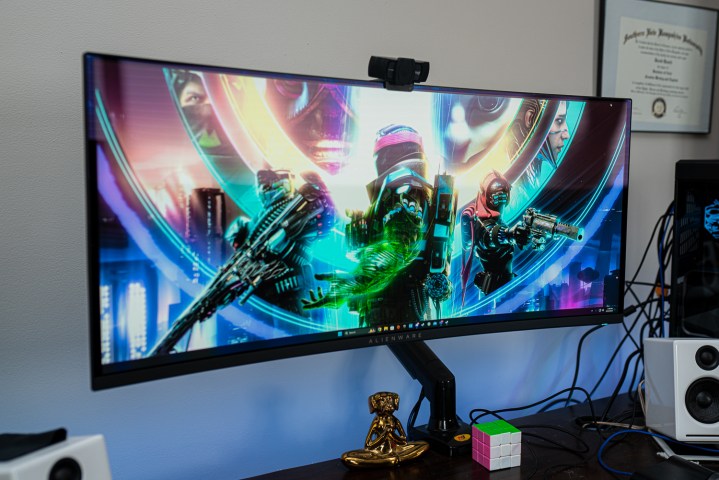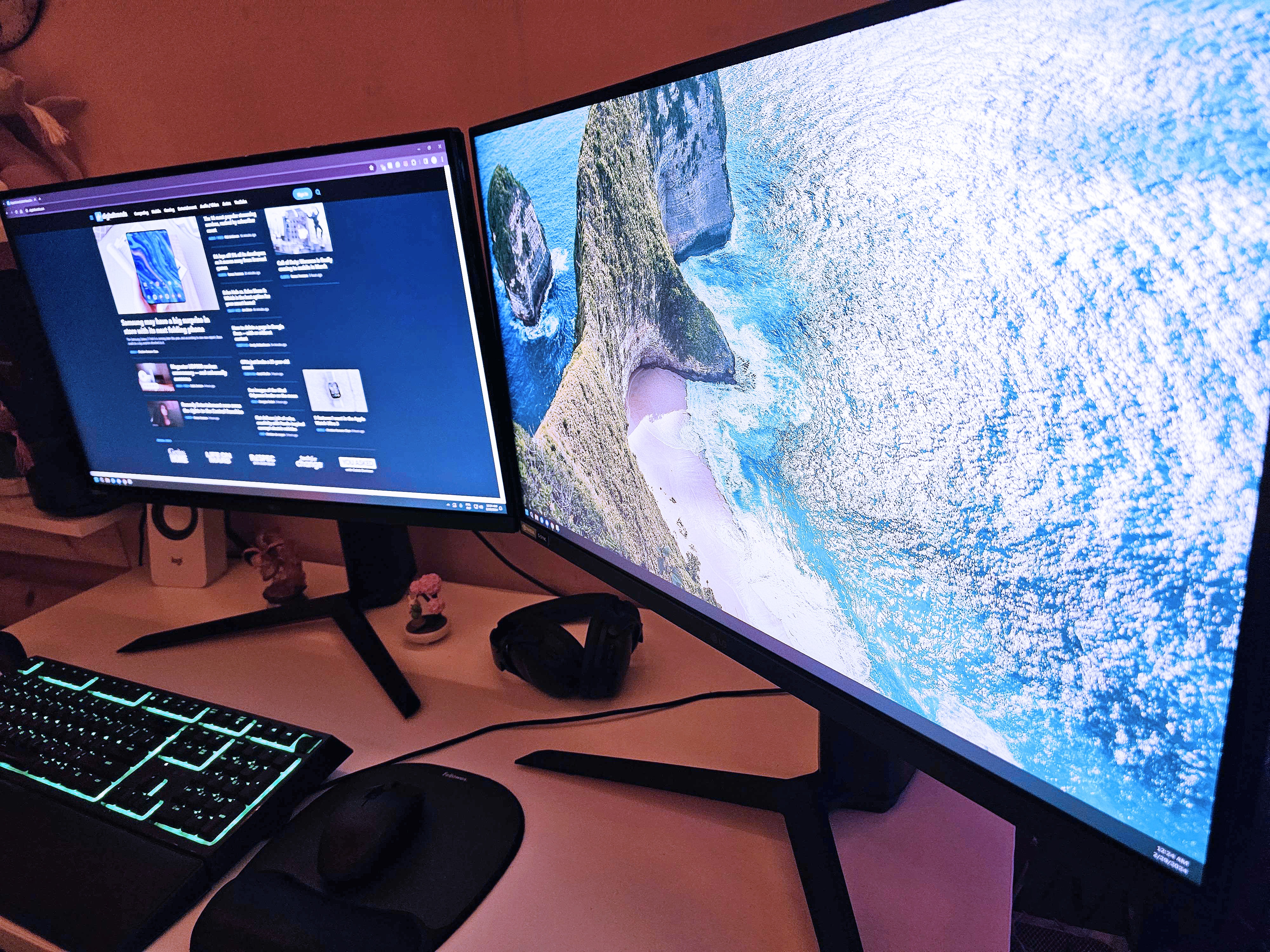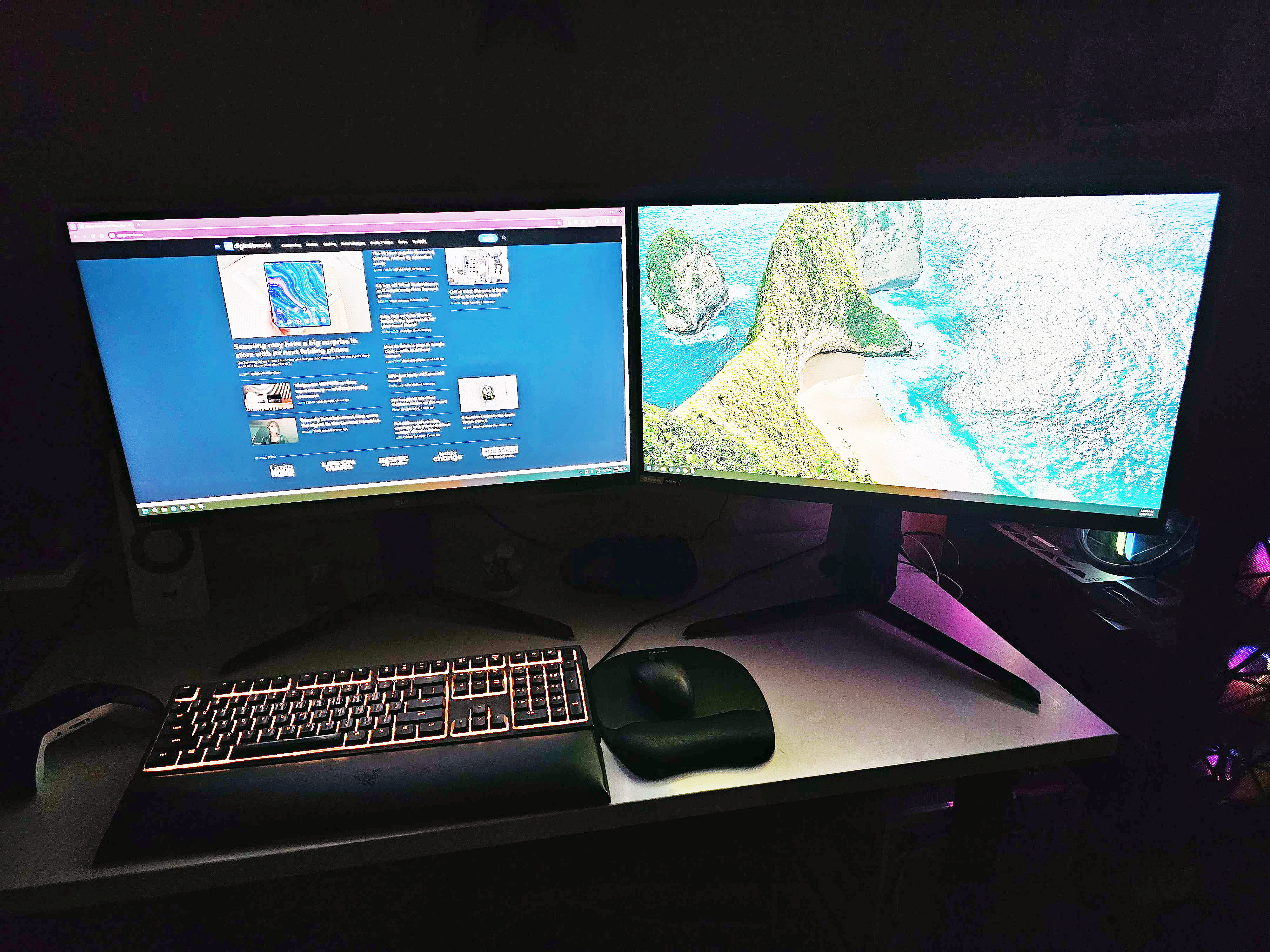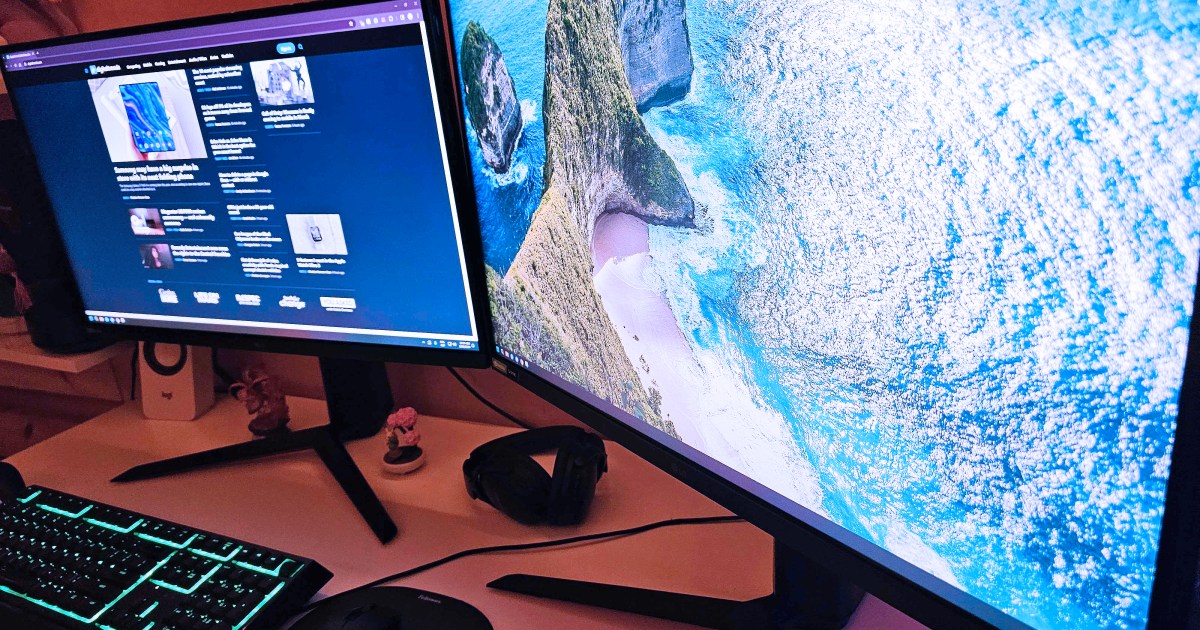At a time when ultrawide monitors are all the rage, I have just doubled down on my decision to stick to a dual-monitor setup instead.
It’s true that some of the best gaming monitors are ultrawides, but my recent purchase finally made me fix the one thing that bothered me about running dual monitors — and I couldn’t be happier.
Imperfect, but perfect for me

I’ve been using two monitors for the past 10 years. Before that, I had been running a single 1080p screen, so the upgrade to two monitors was pretty mind-blowing. At the time, both my monitors were decidedly on the budget end of the scale, but hey, I could watch shows and play games at the same time! What a revelation.
Despite these little (or big) annoyances, I resisted the temptation and didn’t upgrade to an ultrawide when I finally built a new PC last year. There’s just too much I enjoy about my setup to switch it up in a major way. There are lots of reasons why I prefer two monitors over ultrawide, but I won’t get into that here.
My point is that for the past decade, I have been happy with my monitor setup. However, one thing always bothered me, and this year, I finally decided to fix it.
It was time to stop neglecting my second monitor

For many people, the second monitor in a dual-display setup is an afterthought. I was one of those people for years. While I attempted to always have a decent primary display, my second monitor was often the cheapest IPS panel that I could get my hands on.
The result? Thick bezels, subpar colors/contrast/brightness, minuscule refresh rates, and overall poor quality. I used it almost exclusively for work and the occasional Netflix session, but the difference was often jarring looking from one screen to the other. Sure, calibrating helped a bit, but some things can’t be helped even with the most meticulous tweaks. As a result, I always had two vastly different monitors.
Did it bug me? Yes, it did. It bugged me a lot, especially in recent years. However, I’d been planning to replace my 24-inch monitor with a 27-inch. Until then, I decided to make do with my mismatched setup. At least both the displays were of the same size — until I finally upgraded.
Alongside my new PC, I also bought a 27-inch LG UltraGear 27GP850P-B. Arguably one of the best 1440p monitors within an affordable price range, the monitor turned out to be an upgrade over my old screen in every way possible.
Once I had a monitor I really liked, my lowly secondary screen stood out like a sore thumb.
It’s not an expensive monitor by any stretch, but it does the job. It has a vibrant nano IPS panel, 2K resolution, and a refresh rate of 165Hz (or 180Hz overclocked). That may not sound like much for some, but I don’t need more than that — I never play esports games or first-person shooters (FPS). I nearly failed the tutorial in PlayerUnknown’s Battlegrounds, just to give you an idea of my FPS gaming skills.
I didn’t expect miracles at that price range, but this is a decent monitor that I’d recommend to just about anyone in need of a 2K display. I’m not a fan of the stand, and it doesn’t perform great in a dark room, but other than that, I’m completely satisfied.
The problem? Once I finally had one monitor that I really liked, my remaining 24-inch Acer stood out like a sore thumb. It wasn’t just a matter of image quality; it was still 1080p and 75Hz, meaning that the LG was leagues above my secondary screen. Standing side by side with a much better monitor, my Acer never looked worse.
I thought I could put up with it, but I’ve finally budged. Turns out that all I needed was to find a monitor I liked well enough to fully commit to. Since then, I have bought a second LG UltraGear 27GP850P-B and upgraded my 1440p and 1080p setup to two of the exact same monitors, and it’s honestly like night and day.
Regrets? None. I only wish I’d done it sooner instead of neglecting to upgrade my second monitor for years.
No longer an afterthought

Thinking about my monitor journey, I realized that it’s not just the second monitor that is often treated as an afterthought — monitors in general often are. That’s not a good thing. Even if it can’t be done right away, it’s important to match your monitors to what your PC can put out. Otherwise, you’re at risk of wasting performance.
Although I now have two monitors of the same model, they’re not exactly the same; no two displays ever are. However, after adjusting their settings, they’re as close as they can ever be, and I finally feel like I’m making use of my slightly overkill (for my needs) gaming PC.
Would I recommend that others also buy two of the same monitor for dual setups? If you’d asked me a year ago, I would have thought it unnecessary. Now, having tested it myself, I know better. If I was given a tight budget for two monitors, I wouldn’t make the mistake of spending 70% of it on the primary display and the rest on a throwaway monitor. I’d rather have two that were cheaper, but matching.
I’m well aware that finally giving in to ultrawides would have solved the aforementioned dilemma, but at this point, I’m not sure when, and if, I’ll be ready to part ways with running two monitors. While there are things I would have changed in my PC build if I could, such as not waiting for the RTX 4080 Super, I’m fully satisfied with my monitor choice. I had a budget and I stuck to it (which is more than can be said about my PC build). My UltraGears are more than good enough for my needs, and sometimes, that’s the right goal to aim for.
With that said, if I stuck to my mismatched monitor setup for much longer, those fancy ultrawide monitors would have looked a lot more tempting than they do right now — but for the time being, I consider myself almost fully immune to their charms.
Editors’ Recommendations

Wanda Parisien is a computing expert who navigates the vast landscape of hardware and software. With a focus on computer technology, software development, and industry trends, Wanda delivers informative content, tutorials, and analyses to keep readers updated on the latest in the world of computing.


